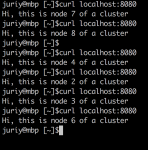Building a Simple Chat App with HTML, CSS, JavaScript, and WebSocket (Node.js)
In this tutorial, we will explore how to create a simple Chat Application using HTML, CSS, JavaScript, and Node.js. This chat application enables real-time messaging between users, allowing them to send and receive messages instantly without the need to reload the application page.








